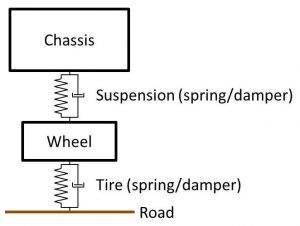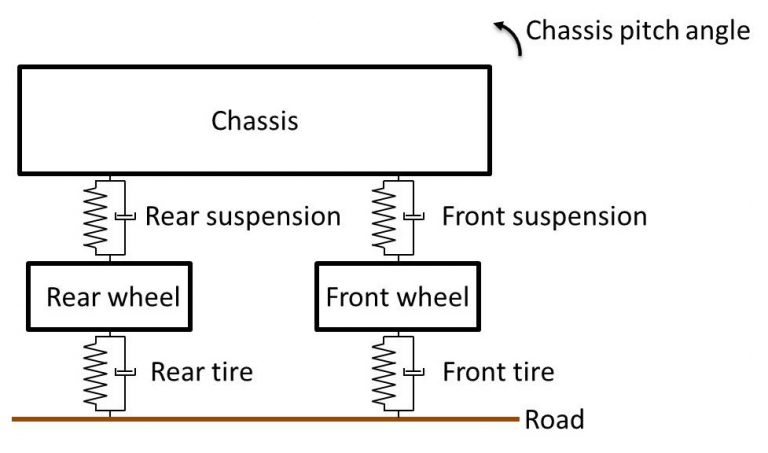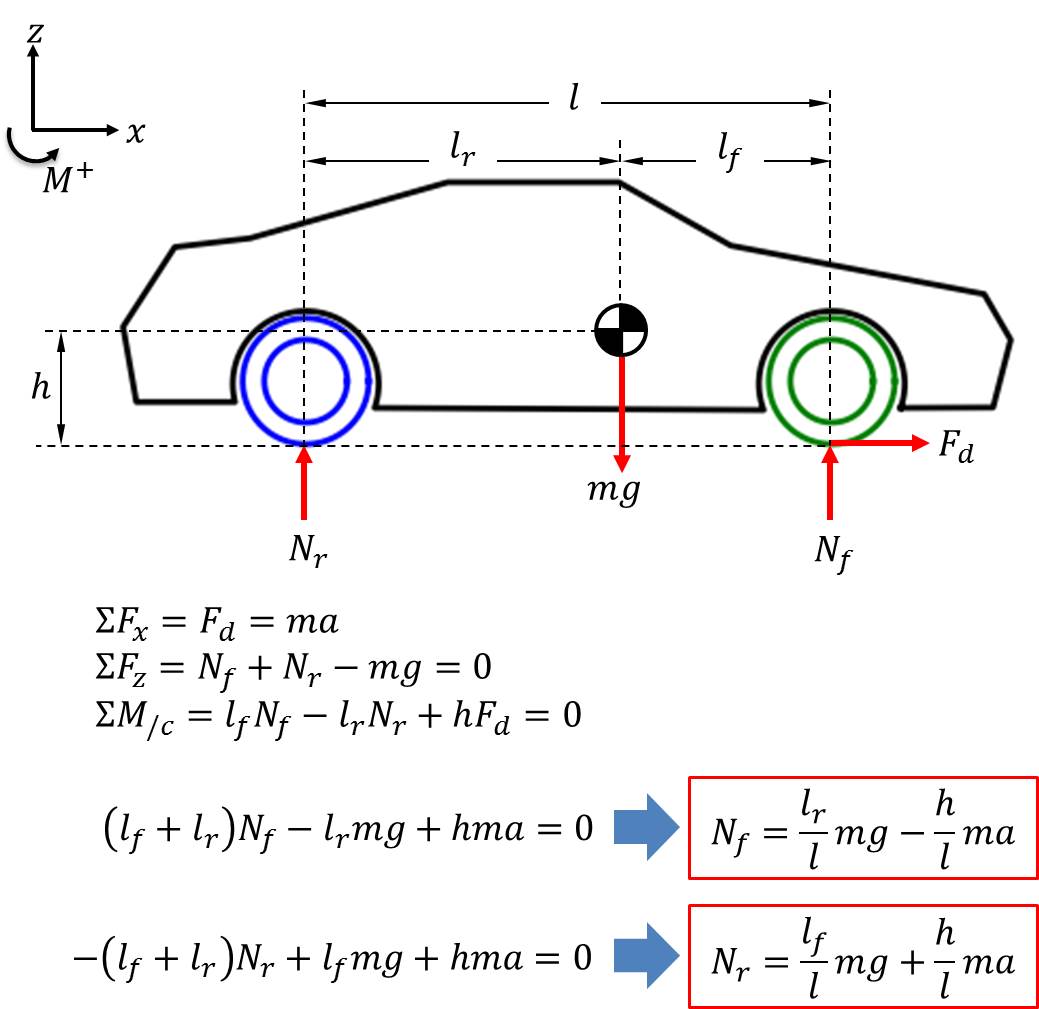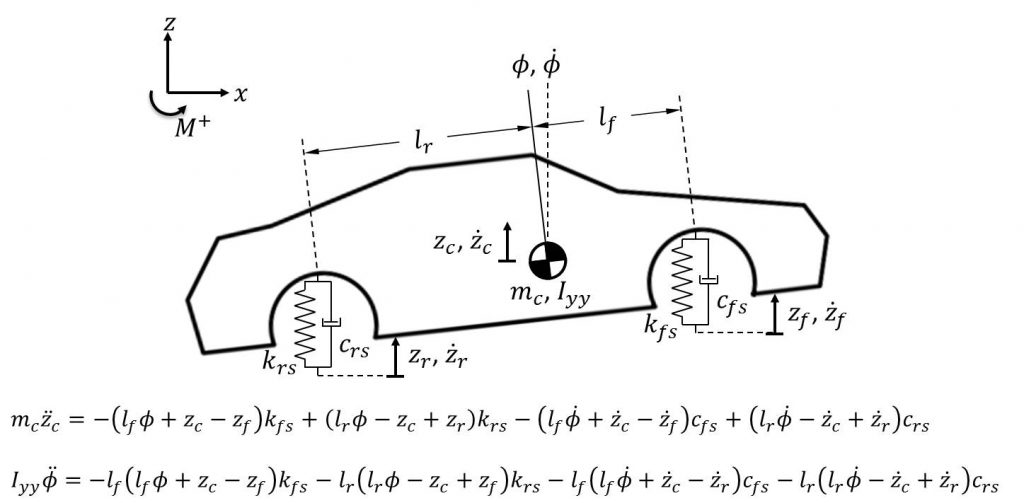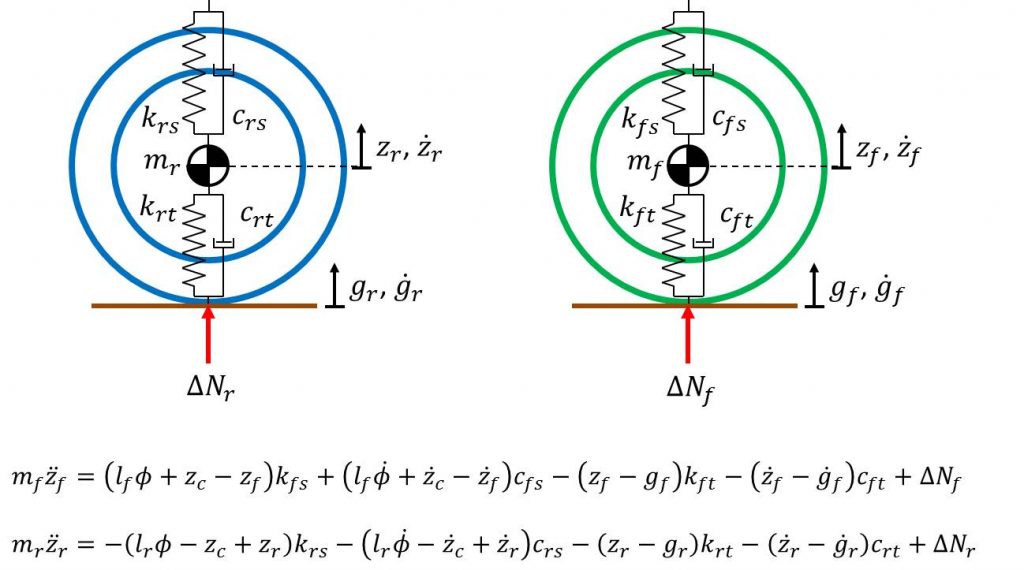The halfcar package numerically solves the differential equations of motion
of a half-car suspension model and animates the dynamics of a car with
matplotlib. Though only the suspension struts (springs) are drawn in the video,
each suspension element is modeled as a spring and damper. Similarly, both
wheels are also modeled as spring-dampers; when the outline of the tire dips
beneath the line representing the road, it means the tire is being compressed.
git clone https://github.com/nrsyed/half-car.git
cd half-car
pip install -e .
python example.py
The example contains a generator function that iteratively passes a horizontal
acceleration to the Car object and subsequently calls its state update
method. This type of generator function, which calls Car.update_state() and
yields the total time elapsed, is all that's necessary to animate the
simulation via the PlotSim class, as shown in the example. Note that the
simulation and animation are decoupled; the Car object can be manipulated
and updated without creating a PlotSim object or animating anything, if
desired.
For a more detailed treatment of the theory, refer to my original blog post. Also note that, in the code, for simplicity, all references to the coordinate z have been replaced with y (and the mass moment of inertia Iyy with Izz).
In the world of vehicle dynamics, a quarter-car suspension model considers a single wheel, modeling both the suspension shock/strut and the tire as a spring-mass-damper. This 1-dimensional, 2-DOF system consists of two differential equations that can be solved to find the displacement of both the wheel (the "unsprung mass") and the chassis (the "sprung mass") in response to the input (the road).
A half-car model extends this to two wheels and adds two degrees of freedom, forming a 4-DOF system of four differential equations that can be solved for the vertical displacements of the front wheel, rear wheel, and chassis, as well as the pitch (angular displacement) of the chassis.
In this case, the input (the road) must be evaluated at two points. The system and aforementioned coordinates are shown below.
To characterize the system dynamics, the normal forces on the wheels must also be taken into account, or more specifically, the change in the normal forces in response to horizontal acceleration, which is based on the wheelbase (the distance between the wheels and the distance of each from the car's overall center of gravity). This phenomenon is what causes a car to pitch back when accelerating and pitch forward when braking.
The four differential equations of the system (one corresponding to each coordinate) can be derived by examining the chassis, which accounts for two of the degrees of freedom, and the wheels. The differential equations corresponding to the chassis are affected by the front and rear suspension and the mass of the chassis.
Each wheel is affected by its corresponding suspension mechanism, the stiffness and damping characteristics of the tire, the normal force on the wheel, and the velocity and displacement of the road profile at the point of contact.
The accelerations are obtained by dividing through by the masses (in the case of the vertical displacements) and the mass moment of inertia (in the case of the angular displacement of the chassis).
Solving the dynamics of the system is a matter of solving this system of differential equations. This can be done in a variety of ways, like the Runge-Kutta methods, or with the Euler method, which is used in this implementation.

